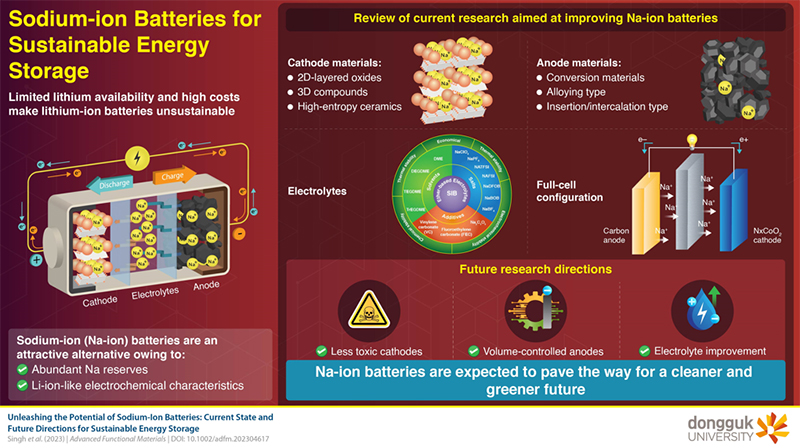Lithium-ion batteries (LIBs) have become essential for energy storage systems. However, limited availability of lithium has raised concerns about the sustainability of LIBs. In a new study, scientists from Dongguk University reviewed the recent advances in sodium-ion battery technology, a potential alternative to LIBs. Their findings can inspire young researchers to combat the current challenges of SIBs for their rapid commercialization.

Image Credit: Dongguk University
With the rapid increase in global energy demand and a growing shift toward renewable energy sources, lithium-ion batteries (LIBs) have become an indispensable part of our daily lives. However, the limited availability of lithium and the consequent increase in its costs have raised concerns about the sustainability of LIBs. As an alternative, sodium-ion batteries (SIBs) have gained considerable attention. SIBs offer many advantages, because their raw materials are naturally abundant, safe, and share a similar chemistry to the already mature LIB technology. However, despite these benefits, there are many challenges that impede the commercialization of SIBs.
To highlight these challenges and their potential solutions, a multinational team of researchers led by Professor Kyung-Wan Nam from the Department of Energy and Materials Engineering at Dongguk University, Korea, recently reviewed the recent advances in SIB technology. “We believe that highlighting the advances and challenges of current SIB technology not only inspires young researchers but also provides valuable insights for enhancing the performance and commercialization of SIBs.” says Prof. Nam, while talking about the study. The study was made available online on July 4, 2023, and published in Volume 33, Issue 46 of the journal Advanced Functional Materials on November 9, 2023.
The team identified the main research areas in SIB technology, emphasizing the development of cathode and anode materials, electrolytes, and full-cell configurations. While most studies till now have only focused on half-cell configurations, full-cell configurations for SIBs can serve as a long-term alternative to LIBs. Fortunately, emerging energy companies and many researchers are working toward realizing practical full-cell SIBs.
The team also highlighted future research directions, urging to eliminate the use of toxic substances in cathodes and design of volume-controlled anodes. Furthermore, they also suggested that electrolytes will make significant improvements in both the cycle life and performance of SIBs.
“While the cost of SIBs might be slightly lower and comparable to LIBs, the availability of sodium and the use of less toxic materials makes them a great alternative. In the long term, SIB can complement LIB technology, rather than being a competitor,” says Prof. Nam.
The team expresses confidence that most of the current challenges will be addressed in the coming years, paving the way for a cleaner and greener tomorrow!